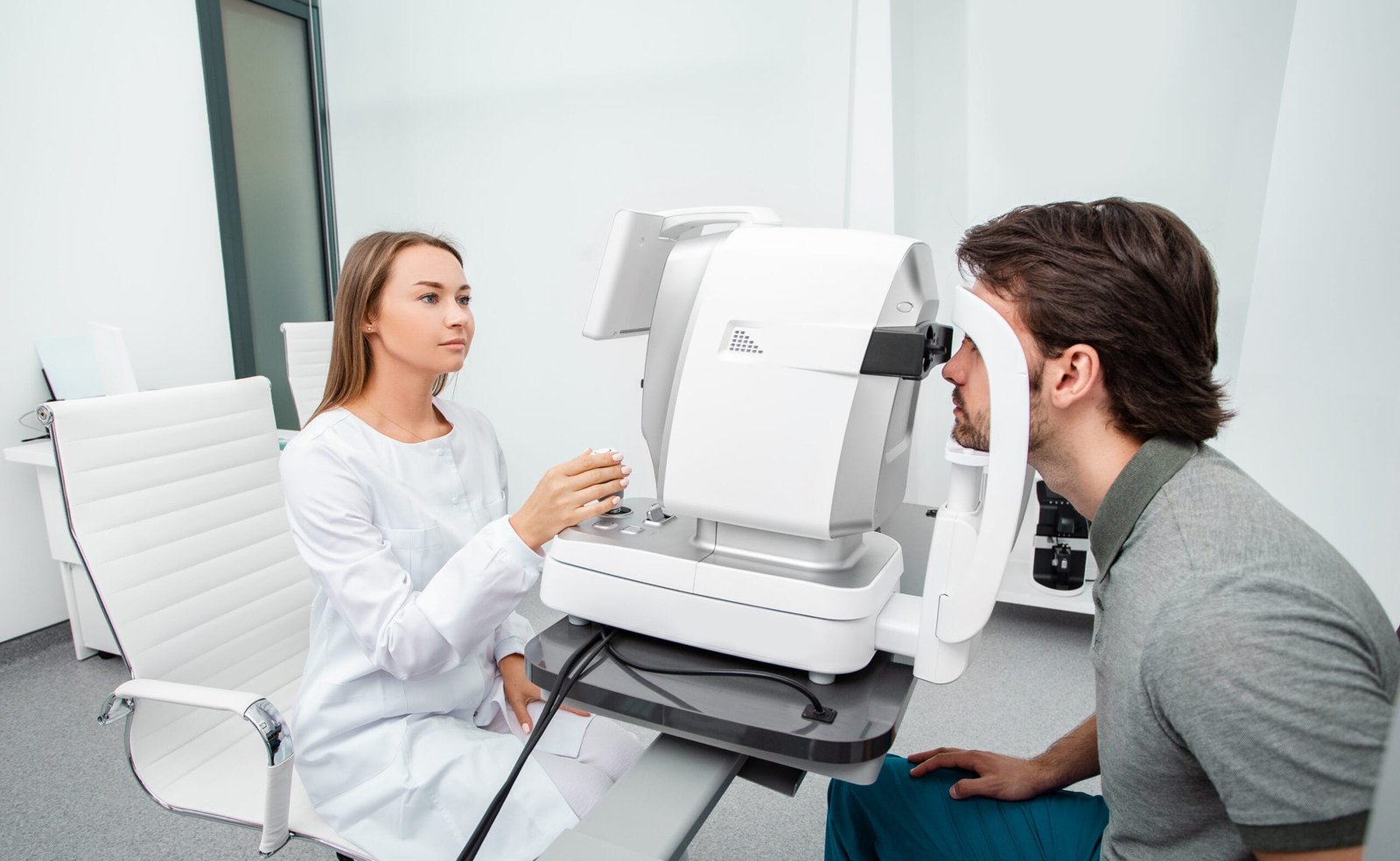Ever wondered how eye doctors determine your prescription so precisely? The automated refraction eye test has revolutionized modern eye care, offering speed and accuracy that traditional methods can’t match. Let’s explore this fascinating technology that’s changing how we assess vision.
What is an Automated Refraction Eye Test?
An automated refraction eye test is a computerized diagnostic procedure that objectively measures refractive errors in your eyes—the optical imperfections that cause nearsightedness, farsightedness, and astigmatism. This sophisticated examination uses a device called an autorefractor (or automated refractor) to determine the lens prescription needed to correct your vision.
Unlike traditional manual refraction that relies heavily on patient feedback (the familiar “which is better, 1 or 2?” questions), the automated refraction eye test provides objective measurements with minimal patient input. It serves as the foundation for comprehensive vision assessment, often paired with phoropter examinations for final prescription refinement.
How an Automated Refraction Eye Test Works
The technology behind an automated refraction eye test is fascinating and complex. Here’s a detailed breakdown of the process:
The Science of Light Reflection
At its core, an autorefractor operates on a principle called retinoscopy—analyzing how light behaves when it enters and exits the eye. The device projects infrared light beams into the eye and measures how they change as they pass through the cornea, lens, and other ocular structures before reflecting off the retina.
The autorefractor’s sophisticated sensors detect minute variations in these reflections. Since light behaves differently when passing through eyes with different refractive errors, the pattern and characteristics of the reflected light provide crucial diagnostic information.
The Measurement Process
During an automated refraction eye test, the following steps occur:
- The patient positions their chin on a rest and forehead against a bar while looking at a target image (often a hot air balloon or farmhouse that appears to recede into the distance).
- This target serves an important purpose—it relaxes the eye’s accommodative response (focusing mechanism) to prevent measurement errors.
- The machine captures multiple readings across different meridians of the eye (typically at least three).
- Advanced algorithms analyze these measurements to calculate:
- Sphere: The overall focusing power needed (measured in diopters)
- Cylinder: The amount of astigmatism correction required
- Axis: The orientation of astigmatism (measured in degrees)
- The device takes measurements for both eyes, often in less than a minute total.
Modern autorefractors are frequently combined with keratometers to form autorefractor/keratometers (AR/Ks) that also measure corneal curvature. This additional data is particularly valuable for contact lens fitting and detecting corneal abnormalities. For a closer look at these advanced instruments, visit our collection of autorefractometers.
Credits : https://www.youtube.com/@kelloggeyecenter
The Complete Examination Workflow
The automated refraction eye test is typically one component of a comprehensive eye examination sequence:
- Pre-examination: Visual acuity testing with an eye chart or digital projector
- Automated refraction: Objective measurement with the autorefractor
- Subjective refraction: Fine-tuning the prescription using a phoropter
- Binocular vision assessment: Ensuring both eyes work together properly
- Eye health examination: Checking ocular structures with a slit lamp
Many modern practices utilize integrated refraction units that combine these technologies into efficient examination stations.
Advantages and Limitations
Benefits of Automated Refraction
The widespread adoption of automated refraction technology is driven by several significant advantages:
- Efficiency: Measurements take seconds rather than minutes, streamlining the examination process
- Objectivity: Results aren’t influenced by patient communication abilities or preferences
- Precision: Modern autorefractors achieve accuracy within ±0.25 diopters of subjective refraction
- Versatility: Effective for patients with communication challenges, including young children, elderly patients with cognitive impairments, and individuals with language barriers
- Documentation: Digital records facilitate tracking vision changes over time
Limitations to Consider
Despite its advantages, automated refraction has certain limitations:
- It doesn’t account for subjective visual preferences
- Accommodation (focusing response) can sometimes affect measurement accuracy, particularly in younger patients
- Certain eye conditions or previous surgeries may reduce reliability
- The final prescription typically requires subjective refinement
For these reasons, eye care professionals use automated refraction as a starting point rather than the sole determinant of prescription.
Technological Advancements
Recent innovations in automated refraction technology include:
- Wavefront aberrometry for higher-order aberration detection
- Integration with electronic health records systems
- Portable autorefractors for field use in underserved communities
- Telehealth compatibility for remote prescription assessments
- Artificial intelligence algorithms that improve measurement accuracy
These advancements continue to enhance the capabilities and applications of automated refraction systems in modern optometric and ophthalmological practice.
Conclusion
The automated refraction eye test represents a perfect fusion of optical science and digital technology, providing eye care professionals with a powerful tool for vision assessment. While it doesn’t replace the need for comprehensive examinations, it significantly enhances efficiency and accuracy in determining vision correction needs. If you’re interested in exploring quality refurbished optical equipment for your practice, we invite you to visit DSS Optical to discover our selection of certified pre-owned vision care instruments.
